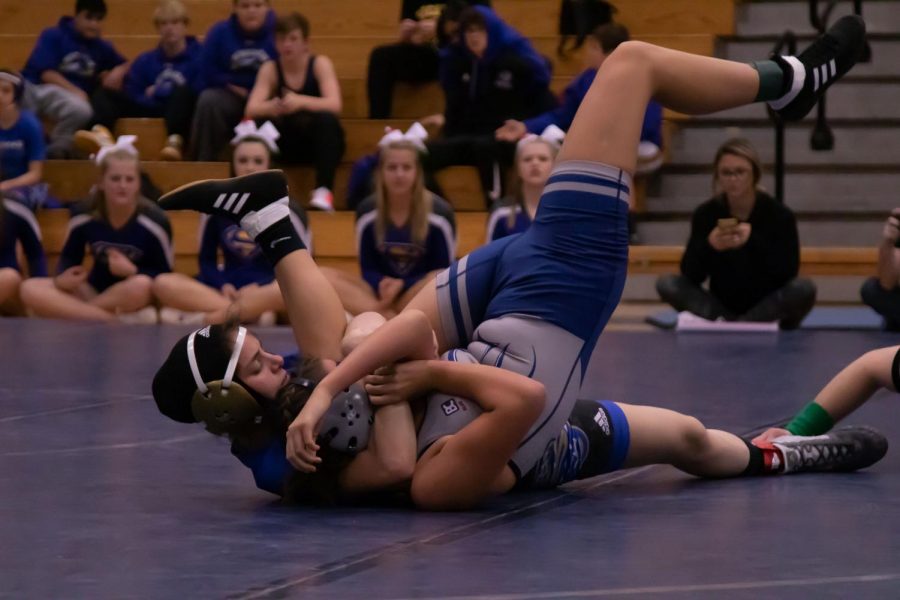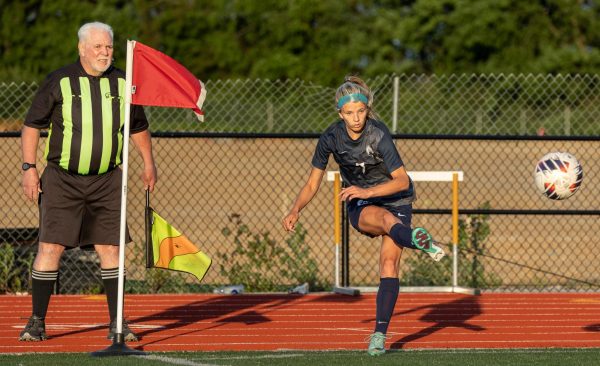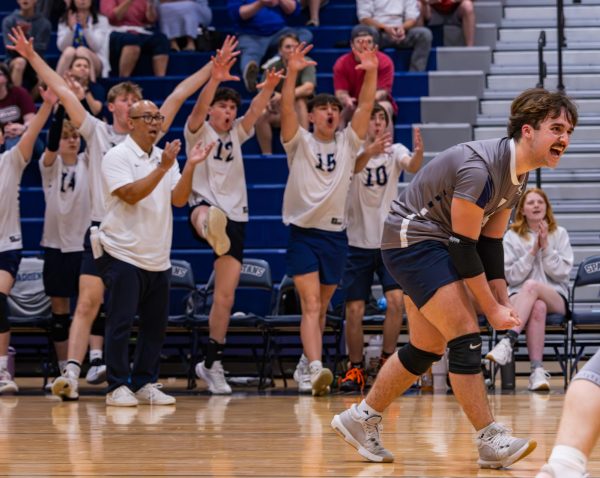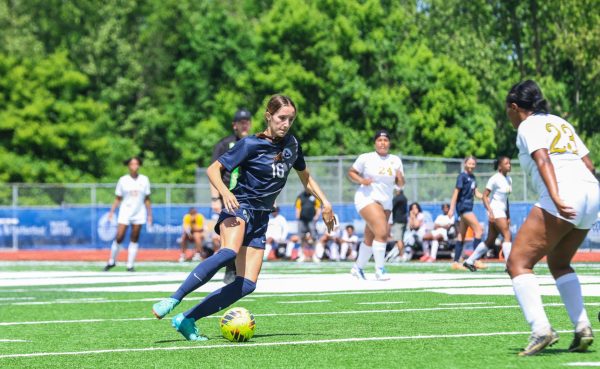Cut the Gut to Make the Cut
Wrestlers shed pounds to prep for the season.
Two wrestlers compete. By cutting weight, a wrestler can gain the cutting edge.
145, 152, 160, 170, 182, 195, 220, 285…See the pattern? The difference from number to number, from weight class to weight class is the hard-earned product of hundreds of calories, countless workouts and ceaseless dedication. By dropping pounds, wrestlers hope to gain an athletic edge against their opponents. This transition is difficult for many wrestlers including junior Emily Crass. Crass started wrestling this year, excited to be a member of the trailblazing girls wrestling team. In order to be in shape for her season, she underwent a radical shift in her habits.
“I’ve changed my diet a lot. I cut out dairy, and I’ve just been like eating a lot smaller portions than what I usually eat, and I work out a lot. And whenever I go to the gym and stuff, I wear sweats so like I can just sweat more, you know, and just try to lose, like, fat. It’s really hard though,” Crass said.
Unfortunately, Crass was forced to quit the wrestling team due to a foot injury from her time on the cross country team her sophomore year.
Methods of shedding pounds in the wrestling world have long been stigmatized as extreme and unhealthy. ‘Cutting weight’ often conjures up images of starving masses of muscle, of pathetic portions, of young men spitting into water bottles with hopes of dropping water weight, drip by drip. Junior Alex Vogel has been wrestling since eighth grade and is no stranger to this reality.
“It’s just painful to watch,” Vogel said. “It just doesn’t look good, [wrestlers who do not cut weight properly] get their eyes, you know, baggy. They could look like they’re basically skeletons.”
Vogel, who is on track to trim 30 pounds this season, reduced his daily caloric intake by 40 percent and eats only two meals a day.
It may seem extreme, but slimming down can make all the difference. While Coach Steve Cross never insists that a wrestler cut weight, he does maintain that shedding fat enhances performance.
“If you do it properly…
”Through 31 years of coaching and nine years of competing, from days fueled on raw carrots to nothing at all, Cross has witnessed the gamut of harmful dietary regimes. However, in recent years, MSHSAA regulations have significantly diminished the prevalence of unhealthy weight loss methods. To certify for a weight class, athletes must first pass a hydration test. Next, body fat percentage is calculated and each wrestler receives a custom weight-loss plan.
“Based on that weight-loss plan, you know, if they’re going down to another weight class, they’re only allowed to lose one and a half percent of their body weight per week, so they have to do it slow and controlled,” Cross said. “It’s a lot safer, a lot healthier.”
While this effective system will be utilized in the girls’ wrestling program, much about the relatively new female sport is yet to be determined, including weight classes. According to a study conducted by the University of New South Wales, women store 6-11 percent more body fat than men, resulting in very different body composition. To account for this, female weight classes will be derived from the certified weights of this season’s female wrestlers.
All numbers aside, the pioneer of Central’s girl wrestling team, senior Sophia Tran, urges her fellow teammates to nourish their bodies and to remember a scale reading does not measure success.
“Just be healthy! Care about your health and don’t worry about too much about weight because health always has to go first to be the best at what you’re doing,” Tran said.
Your donation will support the student journalists of Francis Howell Central High School. Your contribution will allow us to purchase equipment and cover our annual website hosting costs. FHCToday.com and our subsequent publications are dedicated to the students by the students. We hope you consider donating to allow us to continue our mission of a connected and well-informed student body.












